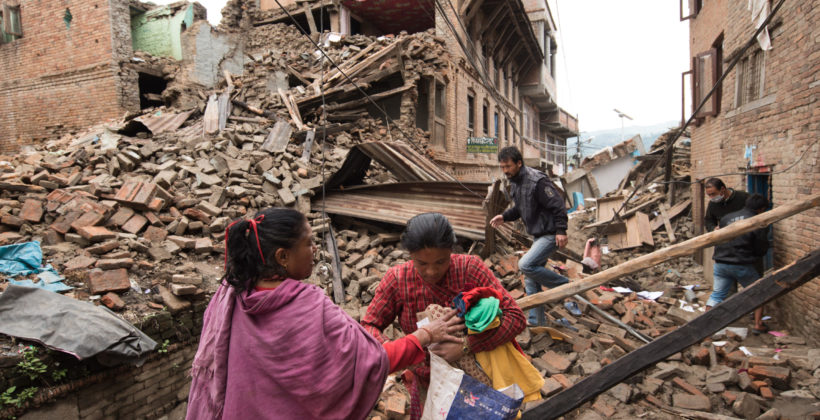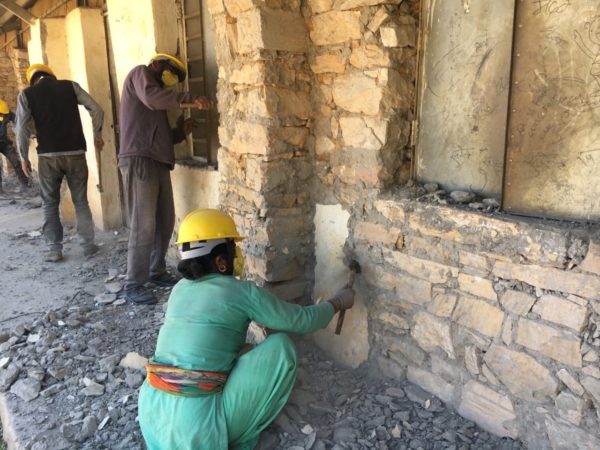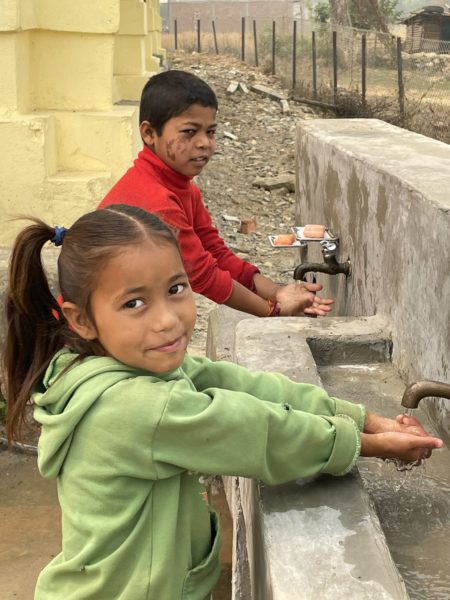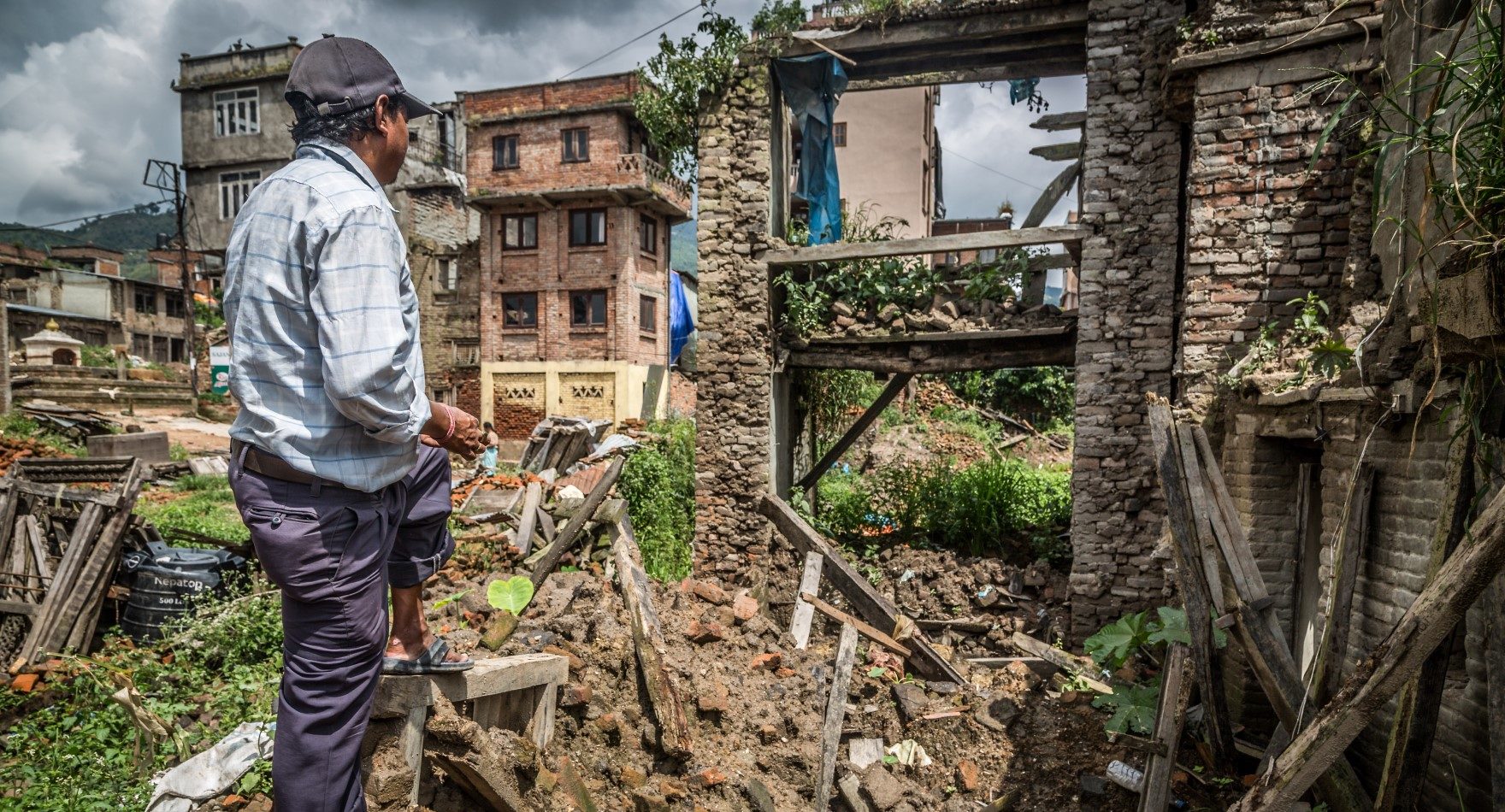
When a massive earthquake struck Nepal just before noon on Saturday, 25 April 2015, images of the destruction shocked the world. Ancient heritage sites were in ruins, stone and brick homes were broken wide open, and people were trying desperately to find somewhere safe to shelter as aftershocks continued. Despite the scale of the devastation, a thin silver lining soon became clear: at a different time of day or on a different day of the week, the human impact could have been much worse.
For many parents in particular, the thought of what might have happened if the 7.8 magnitude quake had struck on a school day is a chilling one. According to Nepal’s National Reconstruction Authority, nearly 8,000 schools had buildings that were destroyed or damaged beyond use. If students had been in those buildings at the time, the death toll among children –already over 30 percent of the fatalities that day – would almost certainly have been significantly higher.
 Nepal’s recovery from the earthquake has been slow, and for many the question is how to ensure lives are saved in the next “big one”. The Nepal Safer Schools Project (NSSP), which is supported by UK Aid and managed by Crown Agents, has been promoting safer school building practices and preparedness systems to help ready schools for when disasters, including earthquakes, might strike. The western areas where the NSSP has been working were fortunately not affected by the 2015 earthquake, which hit central Nepal the hardest. However, experts warn this area is also highly vulnerable to seismic activity, and preparedness will be key for safety and resilience when a major earthquake happens.
Nepal’s recovery from the earthquake has been slow, and for many the question is how to ensure lives are saved in the next “big one”. The Nepal Safer Schools Project (NSSP), which is supported by UK Aid and managed by Crown Agents, has been promoting safer school building practices and preparedness systems to help ready schools for when disasters, including earthquakes, might strike. The western areas where the NSSP has been working were fortunately not affected by the 2015 earthquake, which hit central Nepal the hardest. However, experts warn this area is also highly vulnerable to seismic activity, and preparedness will be key for safety and resilience when a major earthquake happens.
The NSSP has piloted retrofitting and safer construction methods for school buildings, worked with schools and communities to put disaster management systems in place, and helped schools and local governments learn about and proactively counter risks and hazards. Here are some of the lessons our team has learned along the way:
Retrofitting school buildings is a cost-effective option to help save lives: In the NSSP’s trial of retrofitting and earthquake-resilient construction methods, the cost per square meter for retrofitting buildings is within one-third of the cost of a new build with the same standard of earthquake safety. Simple blocks of classrooms that often have few finishing details and less complex plumbing or electrical wiring than a home, make most school buildings good candidates for retrofitting. Revealing the bare walls and then performing strategic structural strengthening work is a relatively straightforward process.
Schools are eager to make their buildings safer – but technical expertise is hard to come by: When word spread that our technical teams were piloting these techniques in local community schools, several other nearby schools asked our designers, engineers and project managers to help them do the same. Some had even already allocated budgets to try retrofitting, but had to put these plans on hold because they struggled to find people trained in the techniques necessary to implement this work. Our team helped these schools create technical drawings, advised on procuring the right building materials in correct quantities, and visited sites to guide workers. This demonstrates how increasing access to expertise is vital to making safer construction and retrofitting standard practice.
Standardisation and scalability are key to making more schools safer: The NSSP’s retrofitting trial on four schools in three districts was a valuable learning opportunity. The project developed a manual for construction, and continually reviewed and updated it as the pilot progressed. This focused strongly on quality control: developing a clear system to make sure that work was to the highest standard. It involved not just detailed technical information, but also step-by-step guidance for project management. Documenting and transferring knowledge in this way is the key to making sure that work can be replicated. This manual can now act as a resource for any school that may want to use these methods in the future, to ensure timelines, costs, and quality are all managed properly.
Creating a safe school requires a “whole package” approach: Safer buildings will help immediately save lives in an earthquake, but a lot more that goes into making a school safe. Nepali school grounds often have everyday hazards, such as an uncovered well or an unfenced staircase, that endanger students and can be addressed with simple risk reduction measures. Systems and practices are also important: school evacuation and safety zone maps and emergency drills to practice what to do when a disaster happens; and local government contingency plans detailing how to keep kids learning in emergencies. The NSSP project works with schools and communities to train teachers, support local governments, and provide resources to help implement the Government of Nepal’s vision for comprehensive school safety. When Covid-19 disrupted the education of millions of children last year, we also added focus on improved hygiene and sanitation in the form of handwashing stations and toilets, as well as other pandemic safety measures like masks for students and non-contact thermometers to help mitigate spread and help schools re-open more safely.
A cultural shift towards safety comes through lived experience and strong examples: Every parent, teacher, student, and community leader our teams worked with wanted their schools to be safer environments. This does not happen overnight; it takes training, conversation, and an iterative experiential process to continually identify hazards and mitigate them. Local masons and engineers were eager to add to their knowledge base, improving not only the safety of the buildings they work on, but also developing practices like health and safety on site. A training program, followed by on-site experience of how to retrofit and build safely, supplied both theoretical and practical knowledge to apply to future work. Community orientations and visits to see our work helped parents and other citizens visualize how existing buildings can be strengthened and new construction can incorporate earthquake safety features. And in the midst of the pandemic, local municipalities also recognised in real time the importance of having contingency plans in place for school disruptions during emergencies.
 Ensuring safety is not a one-time or one-dimensional activity, and as the world faces new and complex challenges like the Covid-19 pandemic and climate change, having a mindset and skills to identify and mitigate risk will be vital. Through this Project it has been wonderful to see the leadership and drive that the teachers, School Management Committees, and local authorities have to take up this important work and ensure an environment in which children in their communities can learn, play, and grow more safely.
Ensuring safety is not a one-time or one-dimensional activity, and as the world faces new and complex challenges like the Covid-19 pandemic and climate change, having a mindset and skills to identify and mitigate risk will be vital. Through this Project it has been wonderful to see the leadership and drive that the teachers, School Management Committees, and local authorities have to take up this important work and ensure an environment in which children in their communities can learn, play, and grow more safely.
